
Paraphrase Generator: Innovative Text Rephrasing
The Paraphrase Generator tool transforms your text with creative rewording, maintaining the original meaning while enhancing clarity and uniqueness, making your writing more engaging and effective.
Why it's awesome
Original Text
The suspect was captured by the police yesterday
Aiseo Rewrite
Police apprehended the suspect the previous day.
Complete sentence restructuring
AISEO understands the meaning of every sentence and rewrites it from the ground up while optimizing for originality and readability. This enables AISEO to fully reform your sentences while maintaining the overall message.
Time Saved, Creativity Unleashed: Effortless Textual Transformation
Ever find yourself staring at a screen, wrestling with words that just won't budge? Time wasted, frustration mounting – we get it. In a world where content rules, your creativity deserves better. Did you know 63% of writers struggle with maintaining originality while paraphrasing? That's where the AISEO free Paraphrasing Tool steps in – your knight in shining armor for effortless textual transformation.
No more agonizing over rephrasing, no more sacrificing your creative spark. AISEO takes your words and crafts them anew to save time, preserving your essence while banishing repetition. This isn't just about saving time – it's about unleashing your creativity on demand.
Whether you're crafting a blog, perfecting an essay, or giving your marketing a facelift, AISEO has your back using natural language processing. Say goodbye to writer's block and hello to a world where your words flow freely. Let's transform your content landscape one thought at a time.
SEO Supercharge: Boost Visibility with Unique Paraphrased Texts
Unlock Your Content's Potential with AISEO Paraphrasing Tool
Tired of crafting quality content yourself that goes unnoticed in the vast digital expanse? Ever wondered why 75% of users never scroll past the first page of search results? It's a tough pill to swallow – your hard work lost in the shadows. But fret not, because here's the game-changer: the AISEO Paraphrasing Tool.
Say goodbye to the struggle of creating unique content to appease the algorithms. With AISEO, your textual content gets a refreshing makeover that not only preserves your message but also supercharges its SEO potential. Search engines crave originality, and that's precisely what our tool offers – an arsenal of paraphrased brilliance to boost your visibility.
No more algorithmic indifference, no more buried brilliance. AISEO free Paraphrasing Tool empowers your content to shine, ensuring your voice is heard amidst the digital noise. It's not just a paraphrasing tool; it's a journey toward unrivaled visibility.
Elevate your content game, ride the SEO waves, and watch your presence soar. Your unique voice deserves to be on that first page – let's make it happen.

Plagiarism No More: Ensure Originality in Every Word
Have you ever accidentally stumbled into the realm of plagiarism? A whopping 58% of students admit to committing plagiarism unintentionally. It's a trap that even the best of us can fall into, tarnishing our integrity and hard work. But here's the silver lining – the AISEO online Paraphrasing Tool.
Bid farewell to the dread of unintentional plagiarism. With AISEO, your plagiarism-free content undergoes a transformation that guarantees originality without compromising your message. Crafting unique content isn't just a choice; it's a necessity in a world that values authenticity.
No more last-minute content tweaks, no more fear of uncited sources. AISEO stands guard against plagiarism, offering a haven for originality. Every word you produce reflects your voice, your ideas, and your brilliance. Embrace this tool and reclaim the purity of your work. Let's ensure that every piece of content you produce is unmistakably yours, free from the shadows of plagiarism.
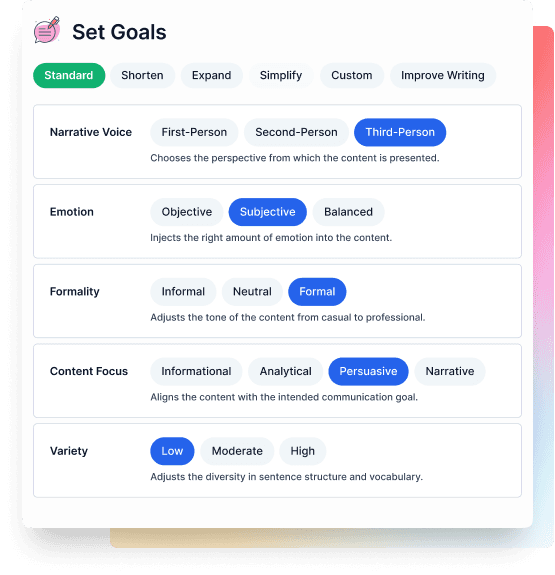
Writer's Block, Banished: Overcome Stagnation with Inspiring Rewrites
We've all been there – the cursor blinking, a blank screen mocking us. Did you know that a staggering 80% of writers encounter writer's block at some point? It's a roadblock that drains creativity and halts progress, leaving you frustrated and stuck. But guess what? The AISEO Paraphrasing Tool is your ticket out of this maze.
Imagine an endless source of inspiration at your fingertips, ready to breathe life into your stalled ideas. AISEO doesn't just paraphrase; it ignites the spark of innovation. Those stagnant sentences find new vigor, allowing you to conquer writer's block with every click.
Bid farewell to creative frustration, and embrace a tool that empowers your words to flow effortlessly. With AISEO, your writing journey becomes an exhilarating adventure, banishing stagnation and welcoming a sea of fresh ideas. Unleash your potential – let's journey beyond the block, one rewrite at a time.

Academic Excellence: Elevate Papers and Essays with Distinctive Phrasing
Ever feel like your academic content could use an edge? Research indicates that 40% of students struggle with crafting compelling essays. It's frustrating when your ideas are top-notch but don't shine through due to lackluster phrasing or grammatical errors. Enter the AISEO Rephrase Tool – your secret weapon for academic excellence.
Tired of reading the same old phrases in your essays? AISEO transforms your content, infusing it with distinctive wording that captures attention. No more sacrificing grades due to dull language; AISEO elevates your research papers to a whole new level.
Invest in your academic success with a tool that fine-tunes your essays into masterpieces. AISEO isn't just a rephrase tool; it's your partner in impressing professors and peers alike. Craft papers that command attention, backed by a tool that understands the power of impactful phrasing. Let's elevate your academic journey, one eloquent rewrite at a time.
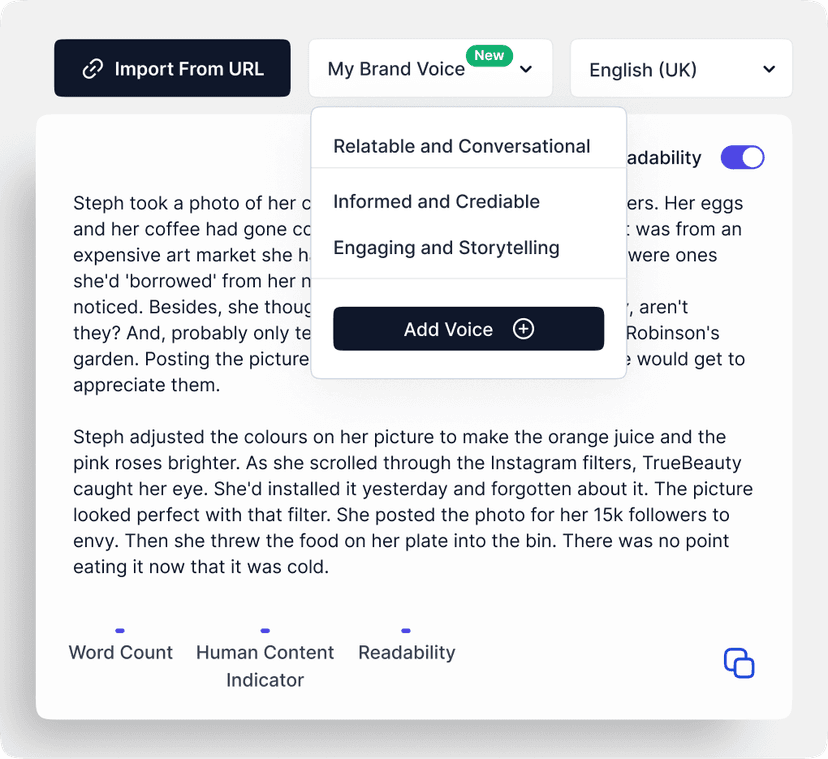
Turn AI Text into Engaging, Human-like Content
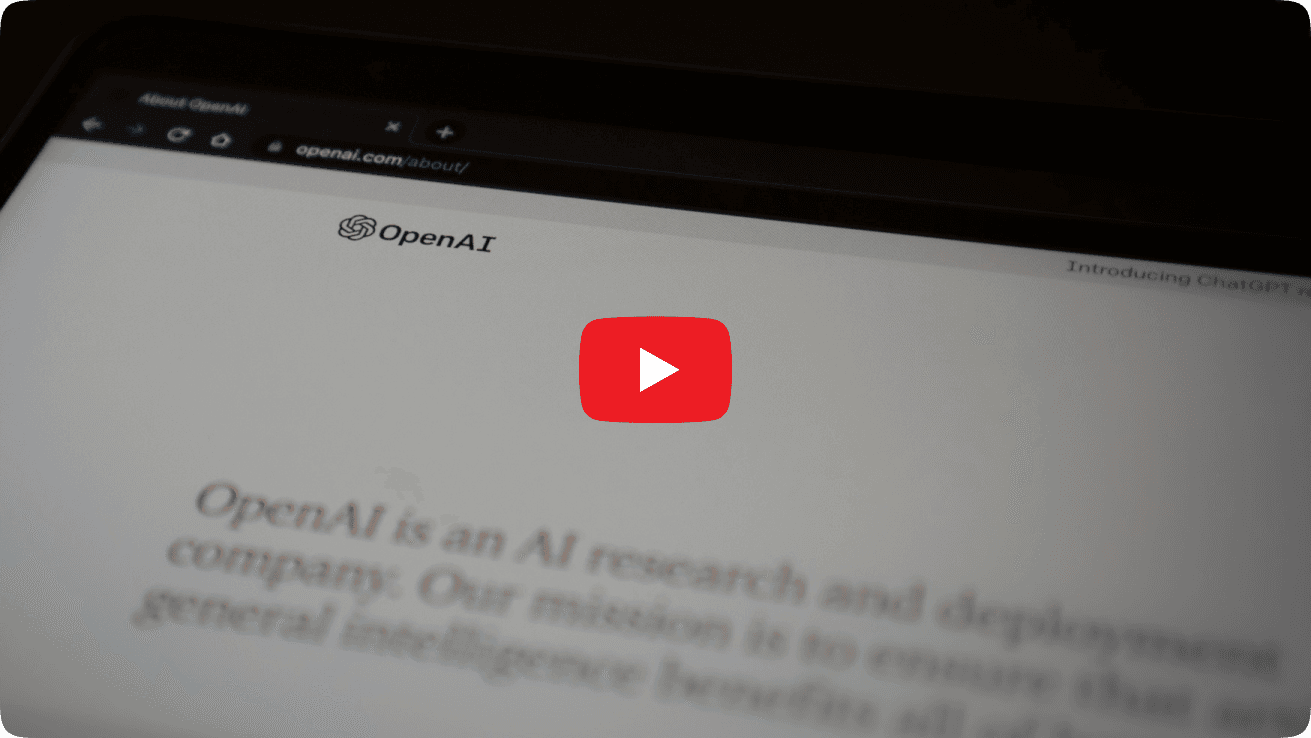
Ever felt like your AI-generated text lacks that human touch, leaving your audience disengaged? In a digital landscape flooded with automated text, connecting authentically is a struggle. Did you know that 82% of online users prefer content that feels human? That's where our human text converter tool
comes in.
Introducing AISEO Humanize Text Tool. Transform your AI generator text into compelling, relatable AI to human text that resonates with your audience and bypass AI detection. No more generic messages
or detached tones.
With AISEO Humanize AI Text free online, you regain the power to craft engaging narratives,
addressing the very heart of your audience's yearning for authenticity.
Unleash the potential of your AI-generated text by infusing it with a human-like touch and bypass AI detection. Break through the noise, connect genuinely, and watch your engagement soar. AISEO Humanize AI Text – because real connections matter in the digital age.
Elevate Engagement Instantly with Humanized Text
Ever feel like your online content is shouting into the void, failing to capture the attention it deserves? Picture this: a staggering 70% of users don't engage with bland, uninspiring text. The struggle is real, but so is the solution.
Introducing AISEO AI Humanizer. Break free from the monotony of AI-written content that leaves your audience scrolling past. Our human text converter tool transforms your robotic prose into a symphony of relatable, engaging narratives. No more missed connections or overlooked messages.
Stop blending in and start standing out. With AISEO Humanize AI Text, your content becomes a magnet, drawing in your audience with every word. Elevate engagement effortlessly – because in a sea of digital noise, your voice deserves to be heard. AISEO Text converter tool – where engagement isn't just a goal; it's a guarantee.
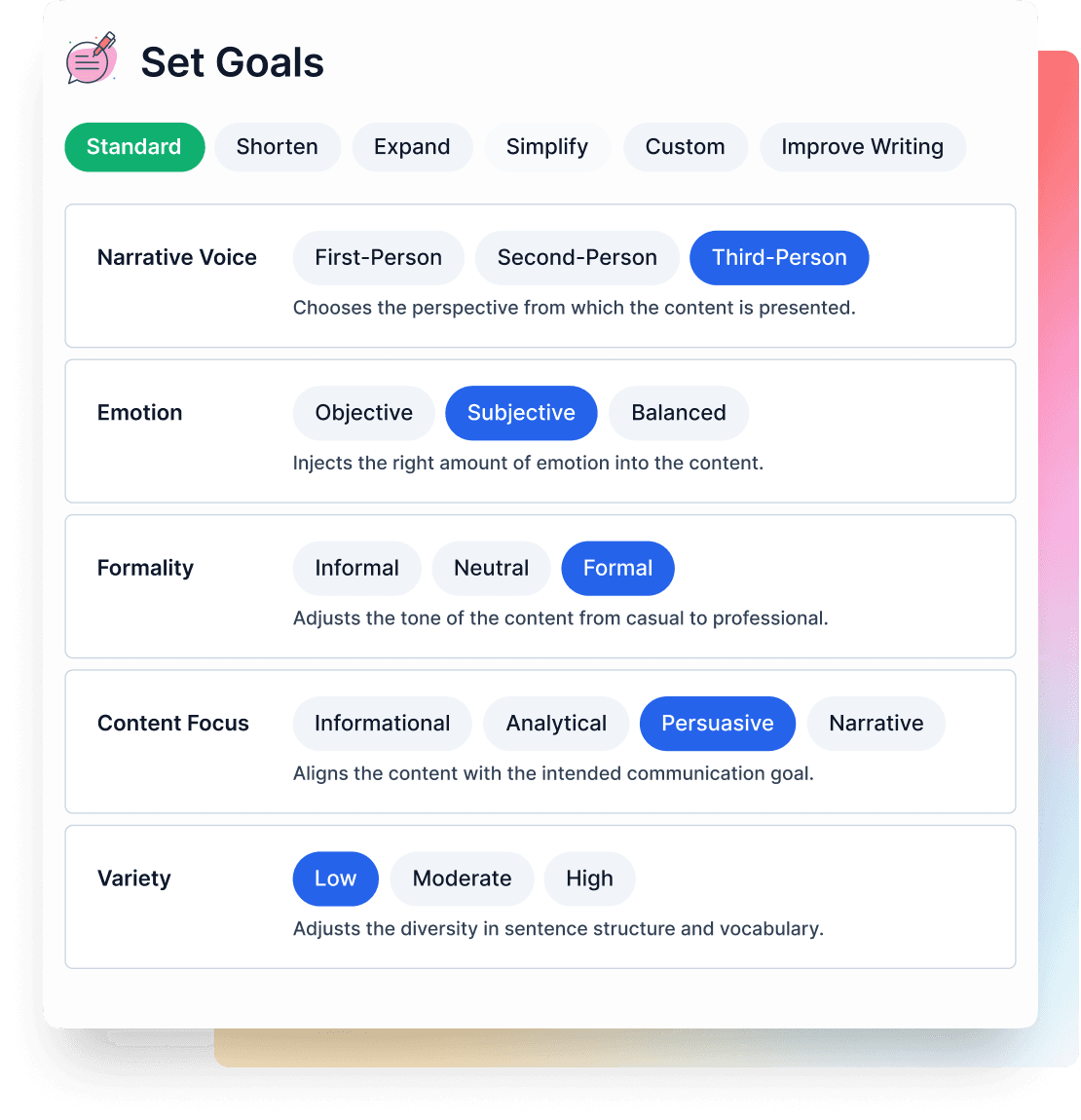
Effortlessly Tailor Tone to Align with Brand Identity
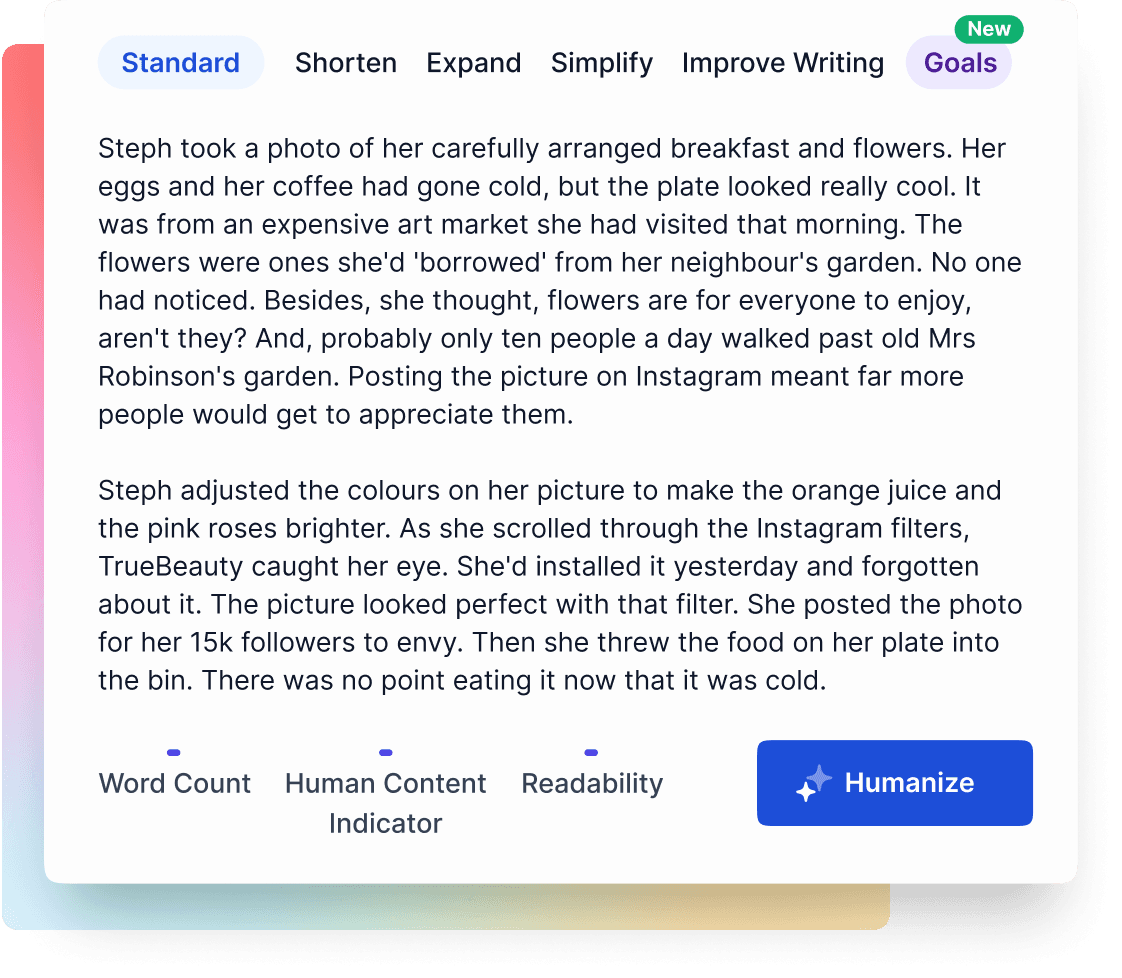
Ever wondered why some brands effortlessly strike a chord with their audience while others struggle to find their voice? Imagine this: 71% of consumers are more likely to engage with AI to human text that aligns with a brand's personality.
Frustrating, isn't it?
Enter AISEO Humanize AI Text. Don't let your brand sound like everyone else; make it uniquely yours. Our Undetectable AI tool empowers you to infuse your AI-generated content with a tone that resonates seamlessly with your brand personality.
No more disconnects or generic messaging.
In a world where authenticity builds brand loyalty, don't settle for a one-size-fits-all tone. AISEO Humanize AI Text ensures your brand speaks in its distinctive voice, forging genuine connections and leaving a lasting impression.
Tailor your tone effortlessly – because in the realm of brand identity, conformity is forgettable. Choose AISEO Humanize AI Text and let your brand's voice stand out in the crowd.
Accelerate Content Creation with AI Humanizer Integration
Ever find yourself stuck in the content creation maze, racing against time to deliver engaging material? Here's a reality check: the average person's attention span is now shorter than that of a goldfish, standing at a mere 8 seconds. Feeling the pressure?
Introducing AISEO's game-changer – Humanize AI Text tool. Say goodbye to endless hours spent tweaking AI text. Our human text converter seamlessly integrates, transforming raw content into humanized brilliance at warp speed. No more content generation bottlenecks or missed deadlines.
In a world where speed meets quality, the AISEO Text converter tool ensures your content generation process becomes a breeze. Empower your team to produce compelling material swiftly and efficiently.
Break free from time constraints and embrace a new era of content generation with AISEO's AI Humanizer Integration. Because when time is of the essence, we've got your back.

Instantly Humanize AI Content for Meaningful Communication
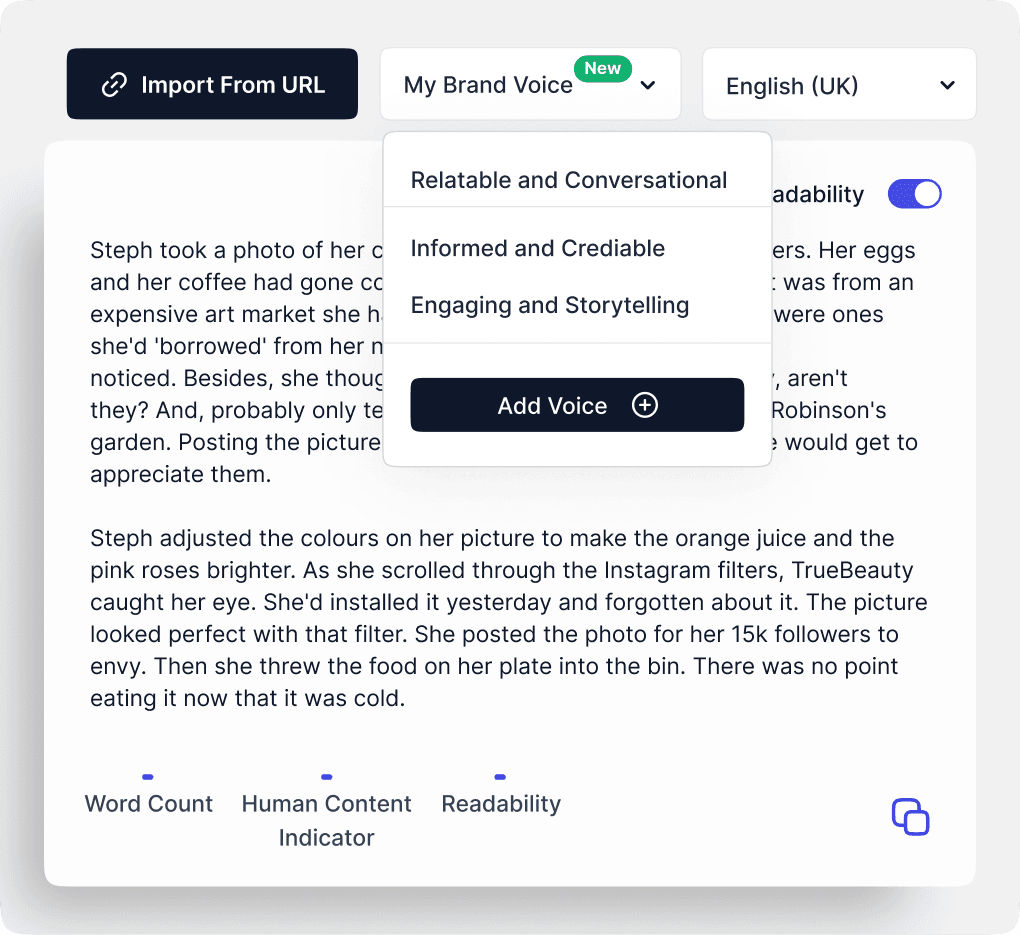
Ever felt like your AI content lacks the soulful touch needed for real connection? In a digital world inundated with information, 64% of consumers say they find generic brand messaging annoying. Are you losing your audience? Enter the antidote: AISEO AI Humanizer. It's time to break free from the robotic monotony and breathe life into your words. Our human text converter effortlessly transforms sterile text into a conversation, ensuring your audience feels heard, not ignored.
No more struggling to strike the right chord or losing your audience in a sea of sameness. AISEO is AI Text converter tool that bridges the gap, infusing your content with a human touch that captivates and resonates.
Choose the AISEO Text converter tool and let your words speak volumes, fostering meaningful connections in a world hungry for authenticity.
Maximizing Content Impact through AI Humanization
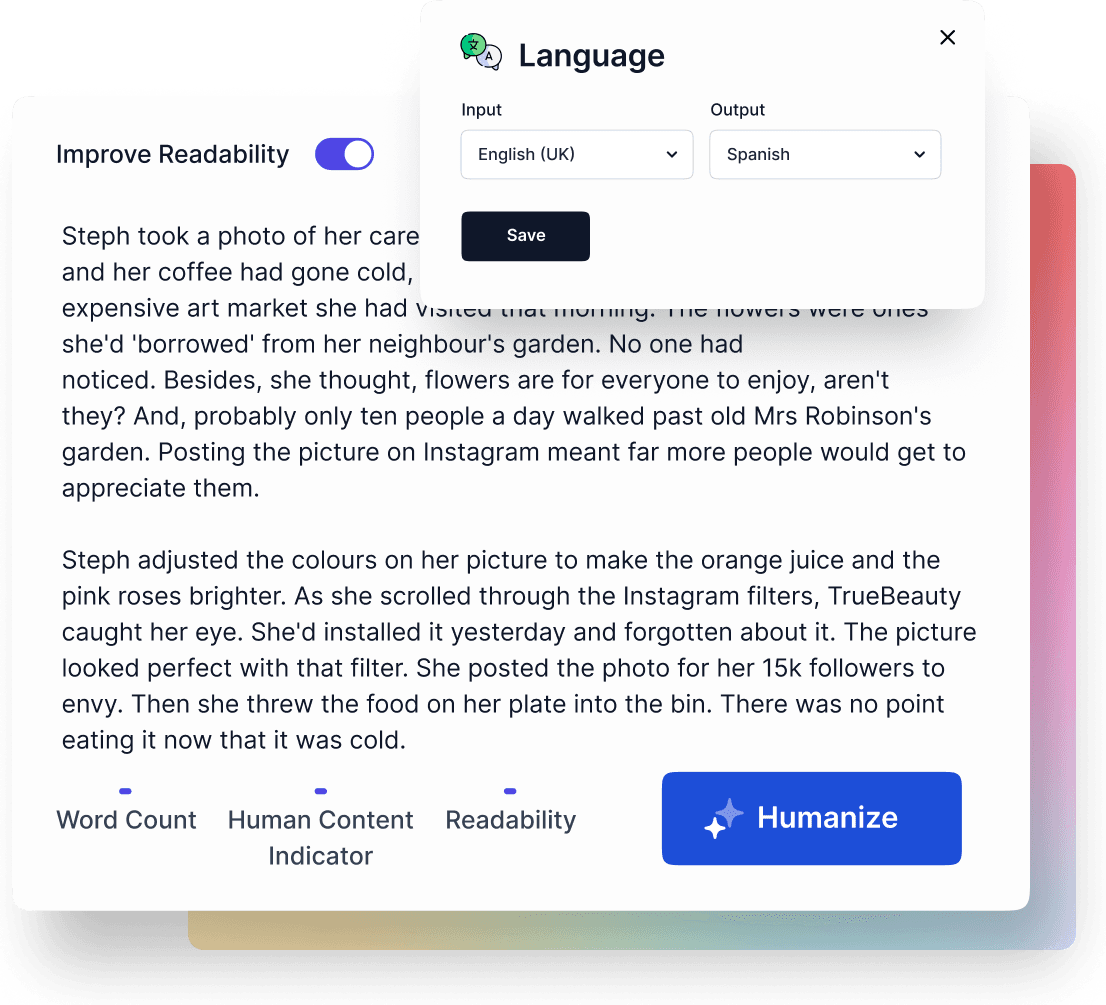
Ever experienced the frustration of seeing your carefully crafted AI content go unnoticed in a sea of digital noise? In a landscape saturated with impersonal messaging, connecting with your audience can feel like an uphill battle. Did you know that 72% of consumers crave authenticity in brand
communication? Are you struggling to make your voice heard? Introducing AISEO AI Humanizer free AI text generator. It's the solution you've been searching for to inject life into your content and forge genuine connections with your audience. Our AI human generator transcends robotic monotony, breathing authenticity into every word. Say goodbye to generic messaging and hello to AI content generator that resonates deeply with your audience.
No more guessing games or lost opportunities. With AISEO Text converter tool, your content becomes a catalyst for meaningful interactions and lasting relationships. Choose AISEO AI generator text free and let your voice cut through the noise, sparking authentic conversations in a digital world craving authenticity.
